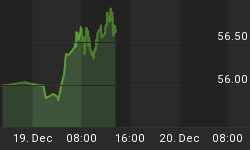Given that the demand for physical gold among private investors has remained strong throughout 2013, the significant price declines in recent months took many investors by surprise. Attempting to make sense out of this situation, speculation has arisen that the so-called 'bullion banks' (the mostly "Too Big to Fail" institutions that are known to work closely with the central banks) have lent out, or even sold, gold on a fractional basis, far in excess of what is supposedly held in their vaults. The result would have been to multiply greatly the amount of 'apparent' gold in the market and thereby depress prices. Such an action would provide needed cover for the embarrassment of currency depreciating central banks' policies.
Much of the chatter stems from the mysterious announcement in January by Germany, the world's second largest holder of gold reserves, to repatriate some 300 metric tons of its gold reserves that are being held at the New York Federal Reserve Bank. It is widely believed that the request was motivated by internal political demands, which questioned the continued need for Germany's sovereign wealth to be in the hands of foreigners.
The request represented less than 5% of all the gold that the Fed officially holds in its New York vaults. (Interestingly, an earlier request by Germany to inspect its assets was denied by the Fed). Despite the relatively small request (relative to the total holdings), repatriation is expected by 2020.
Perhaps for fear that she may be 'persuaded' to accept being 'cash-settled' with U.S. dollars in lieu of gold, Germany dared not complain. Either that, or as an important member of the elite club of central banks, Germany acted 'responsibly' in order to avoid threatening the 'happy equilibrium' of the fractional, central bank-controlled physical bullion market. Nevertheless, the seven-year wait for the return of a deposit rippled through gold markets. Suspicions grew that perhaps the Fed no longer held ownership of the 8,133.5 tons of gold that it reports. For years, central banks have declared that they 'do' things with their gold, including lending it and engaging in swaps. Some, like the Austrian central bank, even declare "earnings" from gold, a non coupon-bearing instrument.
Bloomberg reports that most unexpectedly, since Germany's request for partial gold repatriation, the gold inventory of the COMEX has fallen from eleven million ounces to some seven million, or by about 36 percent, the lowest level in five years. Clearly, dealers have demanded physical delivery on gold purchase contracts on an increasing scale throughout 2013.
Some dealers may even have been prompted to take delivery by the news that bullion banks, including Morgan Stanley, were rumored to have experienced serious runs on the physical gold held in their vaults for their clients. As early as January 23, 2013, The Wealth Cycles site commented that, "The issue...is the near certainty that not all the gold recorded to be held in the bullion banks is really there. Much of it has been pledged and re-pledged against the debt that keeps the world's monetary system afloat."
The letter issued on April 1, 2013 by Dutch State-owned ABN-AMRO bank to holders of paper claims to gold and silver held in its vaults must have shaken complacency. Clients were advised that any physical metal custodied at the bank would in the future be "cash-settled" and that requests for physical delivery would be denied. Contrary to logic, the price of gold did not rise over this period of increased physical uncertainty. Indeed, by the end of June 2013, the gold price had fallen from $1,668.25 on February 8 an ounce to $1,192, or by some 29 percent.
Many have understandably sensed that central banks may well have acted to allow bullion banks to take out massive naked short positions in precious metals in order to drive down the price. The previous upward march of gold was a continuing embarrassment to the current fiat currency regime. On July 18, 2013, Fed Chairman Ben Bernanke testified to Congress that, "...nobody really understands gold prices, and I don't pretend to understand them either." This statement went unchallenged in Congress but aroused suspicions of gross hypocrisy, even evasion, by some observers. So much for deceptive 'forward guidance'.
Likely, Mr. Bernanke would have been shocked utterly had any Congressman had asked him to explain why the Gold Forward Offered Rate (GOFO) had dipped into negative territory. GOFO stands now below both the U.S. Federal Funds Rate and the London Interbank Offered Rate (LIBOR). Investors should appreciate two vital factors. First, gold prices may have been suppressed for years by central banks and could be set to respond as physical shortages and fiat currency debasement become clearer. Second, the enhanced value of physical possession of precious metals could be about to become manifest.
Subscribe to Euro Pacific's Weekly Digest: Receive all commentaries by Peter Schiff, John Browne, and other Euro Pacific commentators delivered to your inbox every Monday
Order a copy of Peter Schiff's new book, The Real Crash: America's Coming Bankruptcy - How to Save Yourself and Your Country, and save yourself 35%!
John Browne is a Senior Economic Consultant to Euro Pacific Capital. Opinions expressed are those of the writer, and may or may not reflect those held by Euro Pacific Capital, or its CEO, Peter Schiff.















